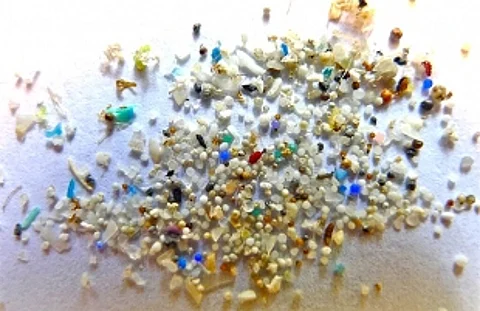

PANJIM: Substantial presence of microplastics (MPs) have been found along the Eastern Arabian Sea, with maximum presence of these pollutants off Mumbai, Cape Comorin (Kanyakumari) and Goa coasts, shows a latest study by CSIR-National Institute of Oceanography (NIO), Goa.
“In the Arabian Sea scenario, as plastic waste travels from offshore and land-based areas, it tends to accumulate in coastal regions, especially in the Indian Ocean’s (IO) coastlines (west coast of India). Hence, this is our first comprehensive research on MPs accumulation in the IO, especially in the Eastern Arabian Sea (EAS),” said Mahua Saha, Principal Scientist at CSIR-NIO (Department of Chemical Oceanography).
“This study deals with the mapping of these MPs, which was essential to understand their abundance and sources in the EAS shelf area. Ecologically, EAS is known for its rich and diverse marine ecosystems, supporting a wide variety of marine species and providing a substantial portion of the global fisheries industry,” Saha said.
The study area covered the coastline of Okha (Gujarat), Mumbai, Goa, Mangaluru, Calicut, Kochi and Cape (Kanyakumari). Speaking about the rationale behind selecting these locations, the study suggested that these locations provide a comprehensive geographic spread from the northernmost to the southernmost points of the eastern Arabian Sea shelf, ensuring a representative sample of the entire coastline.
Specifically, the distances from the coast to the sampling sites generally ranged from approximately 50 km to 100 km offshore.
According to the study, approximate concentration range of MPs per kg dry weight (DW) in the selected study areas are as follows - Mumbai 1,600-4,000, Cape Comorin 1,700-1,900, Goa 700-2,800, Mangaluru 500-3,400, Kochi 1,200-1,500 Okha 1,250-1,350 and Calicut 400-1,500.
Inferring this data, Saha said, “Although there is a slight difference among the concentration level of MPs, all of them display an overlap in terms of concentration. We cannot conclude them as very distinctive highest or lowest values, since this was a one-time study where the concentration levels of MPs in all the locations are almost comparable to each other. More detailed study, on a large number of samples, will give a clear picture of the detailed concentration level of MPs.”
Speaking about the presence of these pollutants in Goa region, the NIO Principal Scientist highlighted the previous study on Mandovi-Zuari estuary and Sal estuary, “Although the Mandovi-Zuari estuary showed a marginally increased abundance of MPscompared to the Sal estuary, that cannot be concluded profoundly based on the preliminary study.”
“However, the present visible differences in the abundance, shape, size, and polymer types of MPs between the Sal and Mandovi-Zuari estuaries can be explained by the hydrodynamic scenario. The Mandovi and Zuari are tropical estuaries and are strongly affected by tidal currents during the dry season and receive a large freshwater influx during the wet season. In both the estuarine system, fragments and fibers were the dominant shapes of MPs, which could be sourced from the local land-based inputs,” she said.
When asked about the overall implications of the study’s findings, Saha said, “The overall polymer identification of the microplastic samples found in the EAS shows that the probable sources of litter discharges were tyre-wear particles, ghost net disposal and others anthropogenic sources along the estuarine region. The risk assessment of MPs via both Pollution Load index (PLI) and Polymer Hazard Index (PHI) values exhibited a moderate to higher hazard level in the studied area.”
“Hence, the overall implication of this study focuses on the source and pathways of MPs which may lead to the goal of reducing the amount of plastic waste that permeates the aquatic environment. It is important to create sustainable alternatives to plastic packaging and consumer goods as well as to improve waste management procedures,” the NIO scientist said.
“Undeniably, this study makes a strong mark for developing effective policies, legal limits, management actions and long-term strategies to mitigate the problem of plastics pollution,” she said.